The Longines Ultra-Chron Diver, The Comeback of A High-Frequency Icon (Live Pics & Price)
Bringing back an emblematic model, summarizing years of precision at Longines.
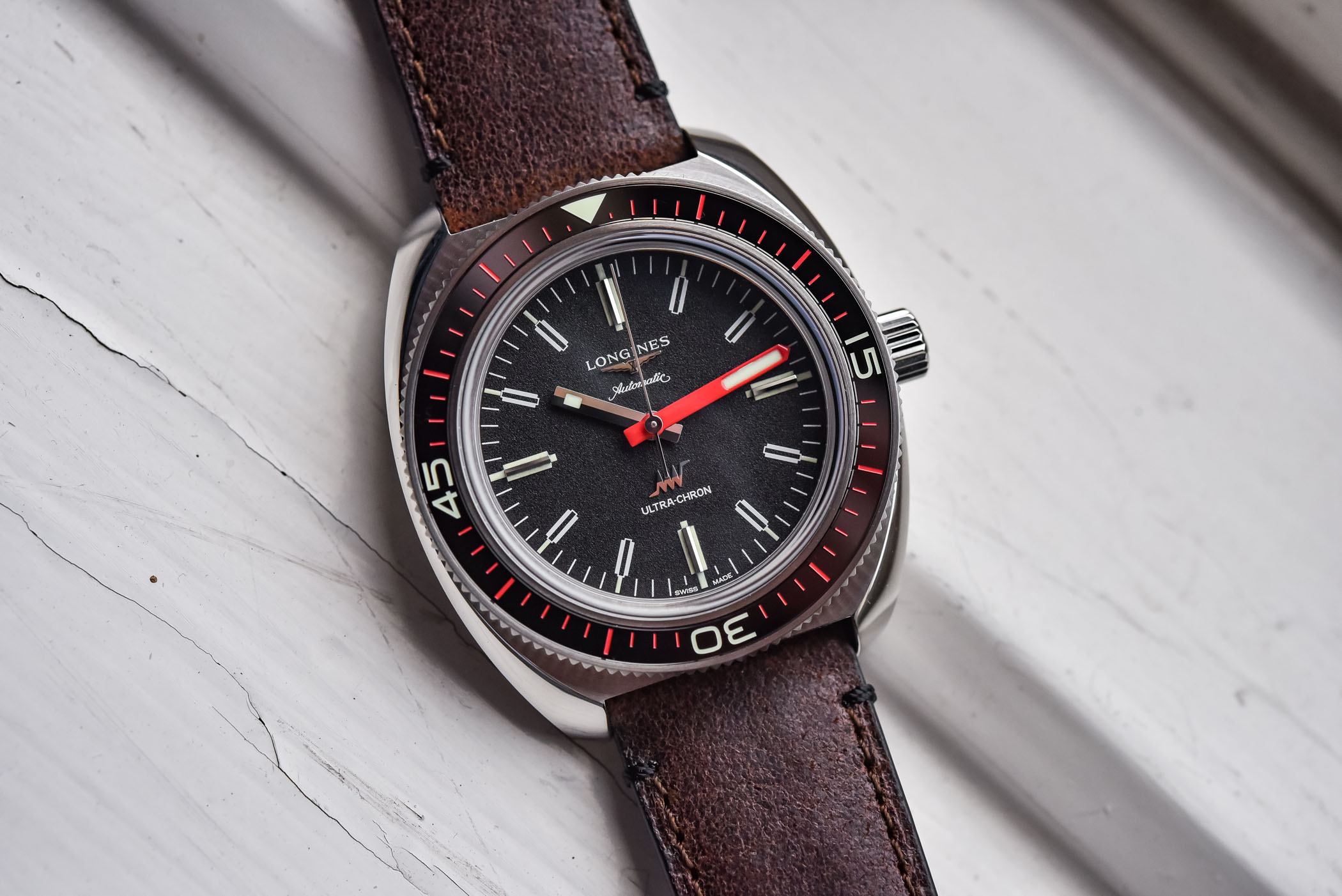
It feels like repeating myself, but indeed, it’s hard not to say this, Longines is one of the brands with the richest history and an incredible collection of important watches. We’ve often covered the topic of historical pilot’s timepieces in our recent coverage, mostly due to the brand’s focus on the Spirit collection. Today, it’ll be rather different, and far more technically oriented. Today, we’ll be talking about high-frequency, chronometry competitions and, as a matter of fact, an emblematic model, the Ultra-Chron. Yes, this milestone of accuracy for the winged hourglass is back, as the brand reissues what used to be one of the first hi-beat watches available on the market, and coincidentally one of the first high-frequency dive watches. It’s time to discover the Longines Ultra-Chron Diver Re-Edition.
High-Frequency at Longines, and the Ultra-Chron
The frequency of a watch represents the number of oscillations performed by its regulating organ. The fast the balance swings and the escapement ticks, the better will be the accuracy – in theory at least. It’s all about statistics. The more data you have, the more refined will be the calculation of the average. So, in theory still, the faster an escapement beats, the more oscillations you’ll have to correct the errors of the others. Remember that the accuracy of a watch is just about an average on a given duration, and not an instantaneous measure.
Most modern watches – post-quartz crisis – have been given a frequency of 3Hz (21,600 vibrations/hour) or 4Hz (28,800 vibrations/hour, the most common frequency), the best compromise between accuracy and longevity of the parts and lubricants. We usually start talking about high-frequency with watches beating at 5Hz / 36,000 vibrations/hour or more. And the concept isn’t new, at all. For instance, the Louis Moinet Compteur de Tierces, most of the time regarded as the first chronograph and built in 1816, had already an ultra-fast frequency of 30Hz (216,000 vibrations/hour), making it an impressively precise instrument for its time. When it comes to wristwatches, the idea of high-frequency (5Hz for most of them) really grew during the 1960s, when brands like Longines and Girard-Perregaux used this technology in accuracy competitions, and later in commercial watches – the first commercial high-frequency watch was by GP in 1966. Followed soon after Seiko (early 1967 with the Lord Marvel) and Zenith with the El Primero (in 1969).
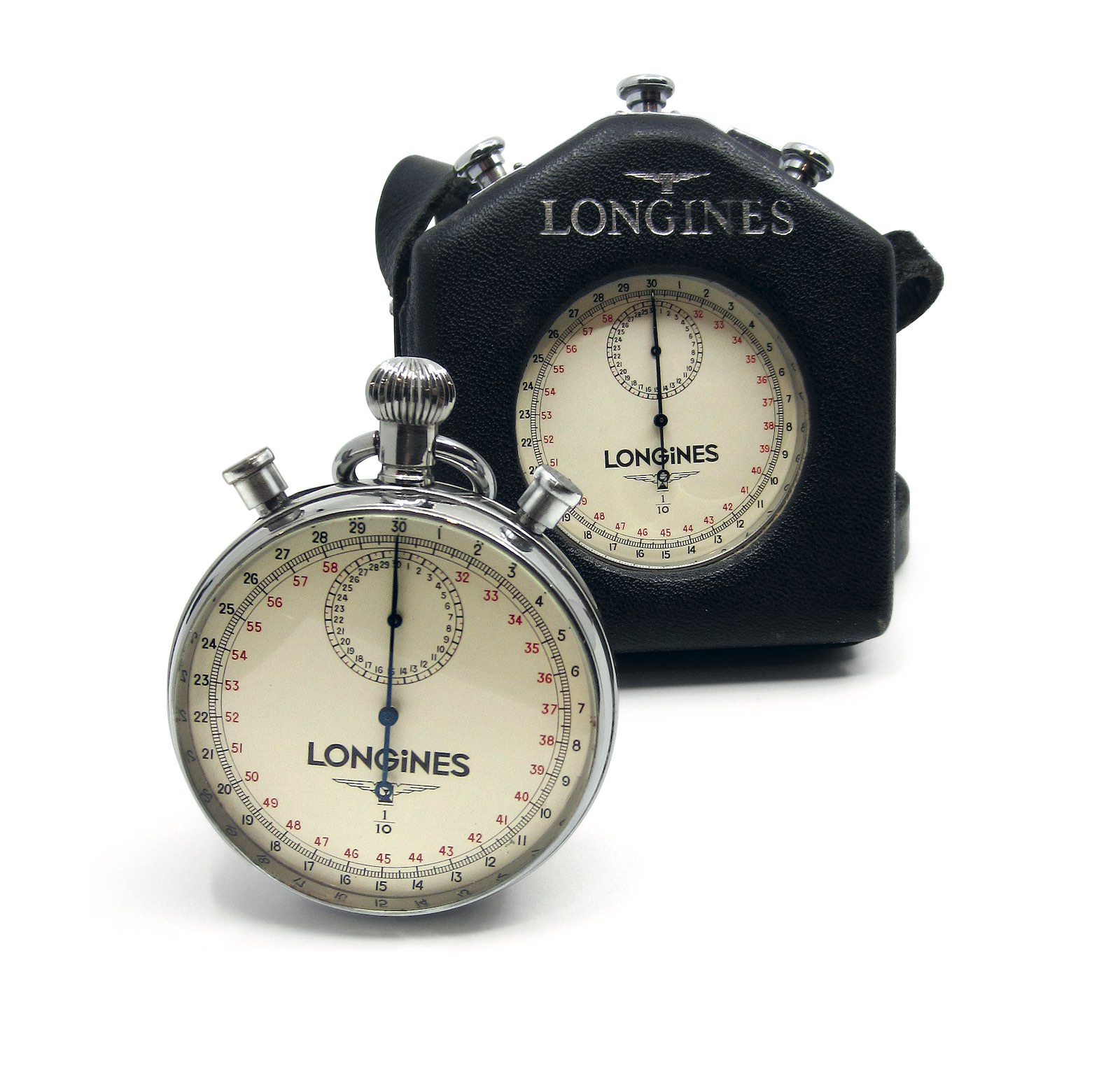
The concept of high-frequency at Longines dates back to 1914 when the brand released a 5Hz stopwatch with a split-second hand. Equipped with the calibre 19.73N, these handheld sports instruments could measure 1/10th of a second. In order to improve the reading of 1/10th of a second, the chronograph hand rotates once around the dial in 30 seconds. Longines will later refine the concept, and launch in 1916 a stopwatch with a 50Hz movement, still with the same movement but this time performing 360,000 vibrations/hour. It was thus capable of measuring events to the closest 1/100th of a second.
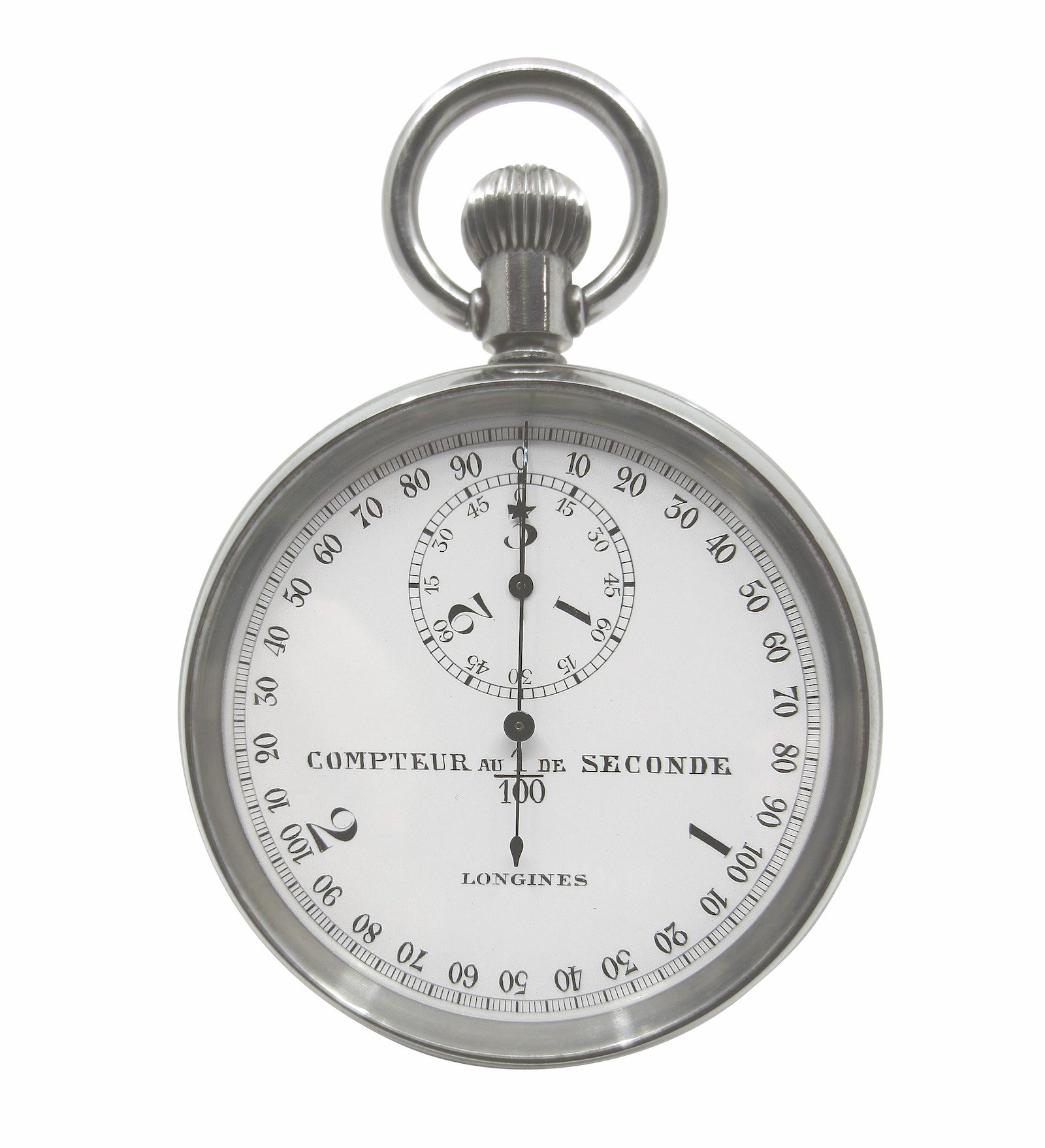
High-frequency has long been reserved for these timekeepers or stopwatches, instruments that were not capable of displaying the time. According to the brand (and to our research), Longines was the first to develop a high-frequency wristwatch movement, in the frame of accuracy competitions and observatory chronometers. This watch, equipped with the Longines Calibre 360, was conceived in 1958 and achieved in 1959. This hand-made, fined tuned shaped movement (32mm x 22mm) was specifically developed to perform in competition and was not intended to be commercialized. Its size and shape were answering the requirements of Concours and were ultimately conceived to have the largest possible barrel – in order to bring a steady flow of energy.

A series of 200 Calibre 360 were manufactured and only one was encased in a wristwatch – that of the observatory competition. This hand-wound movement was beating at 5Hz or 36,000 vibrations/hour and proved to have incredible accuracy. According to Les Dignitaires de l’Horlogerie by Charles Thomann, the Longines wristwatch with Calibre 360 took first and second place in the accuracy competition at the Observatory of Neuchâtel in 1961 and the following year, claimed first, second and third places, thanks to an impressive regulation job performed by Frank Vaucher (1961) or Frank Vaucher and Robert Chopard (1962). In this second attempt (and victory), the high-frequency calibre 360 performed with a daily deviation around or below 1/10th of a second.
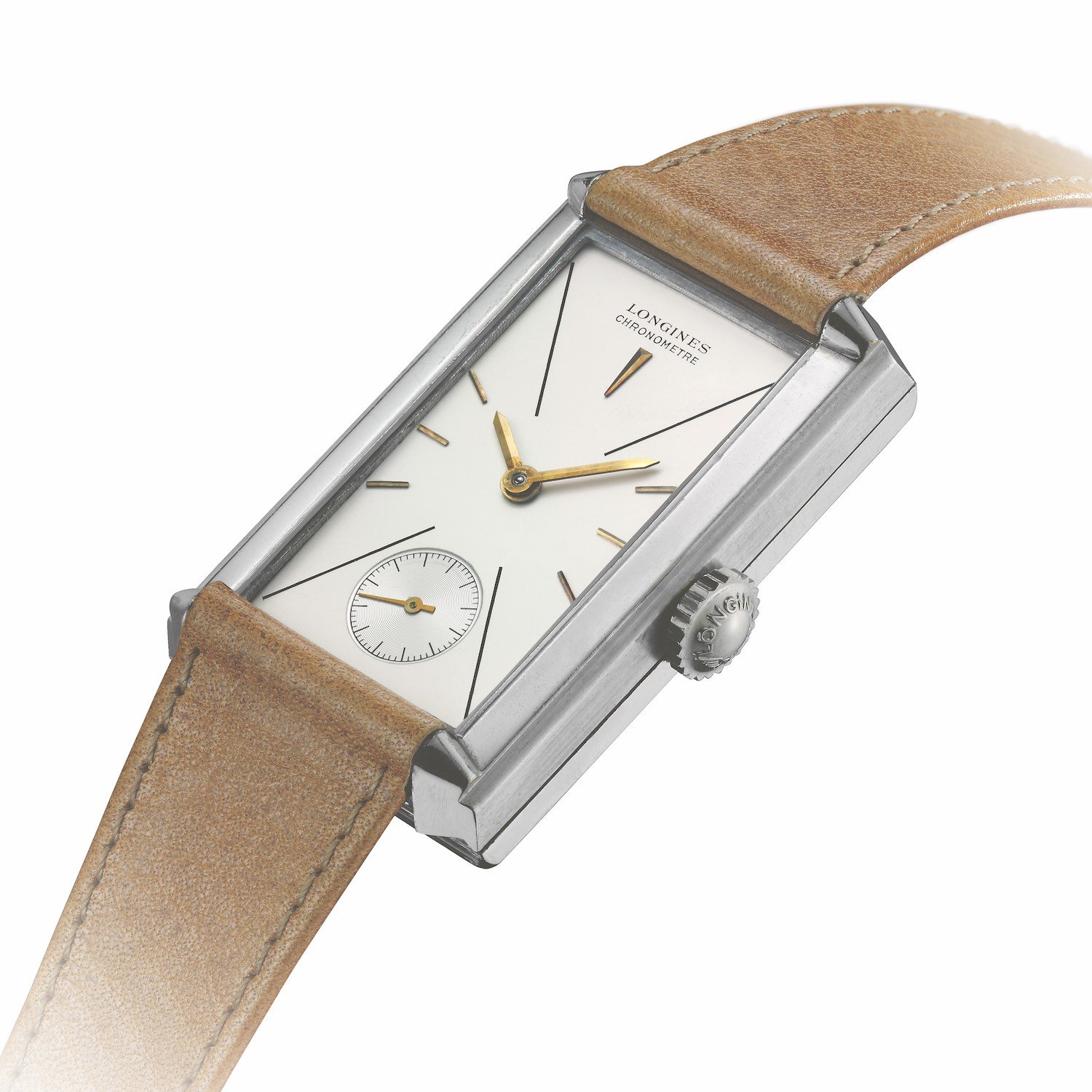
The second half of the 1960s showed the arrival of electronic and ultra-precise movements. Thus, Swiss watchmakers reacted by working on a traditional solution to improve accuracy, which resulted in the creation of multiple high-frequency watches – first Girard-Perregaux with the early 1966 HF, followed by Longines with the Ultra-Chron.

Thanks to their experience in timekeeping and in Observatory Chronometers, Longines’ watchmakers knew that high-frequency was a solution. Obstacles were the reduced power reserve and the deterioration of lubricants. Longines found the solution in the calibre 431 (with patented dry lubrication) and guaranteed an amazing accuracy of one minute a month, or two seconds a day. Being far more accurate than a chronometer-certified by the COSC, the model was named Ultra-Chron. Longines registered the name in October 1966. The first Ultra-Chron watches were sold in the United States in December 1966.
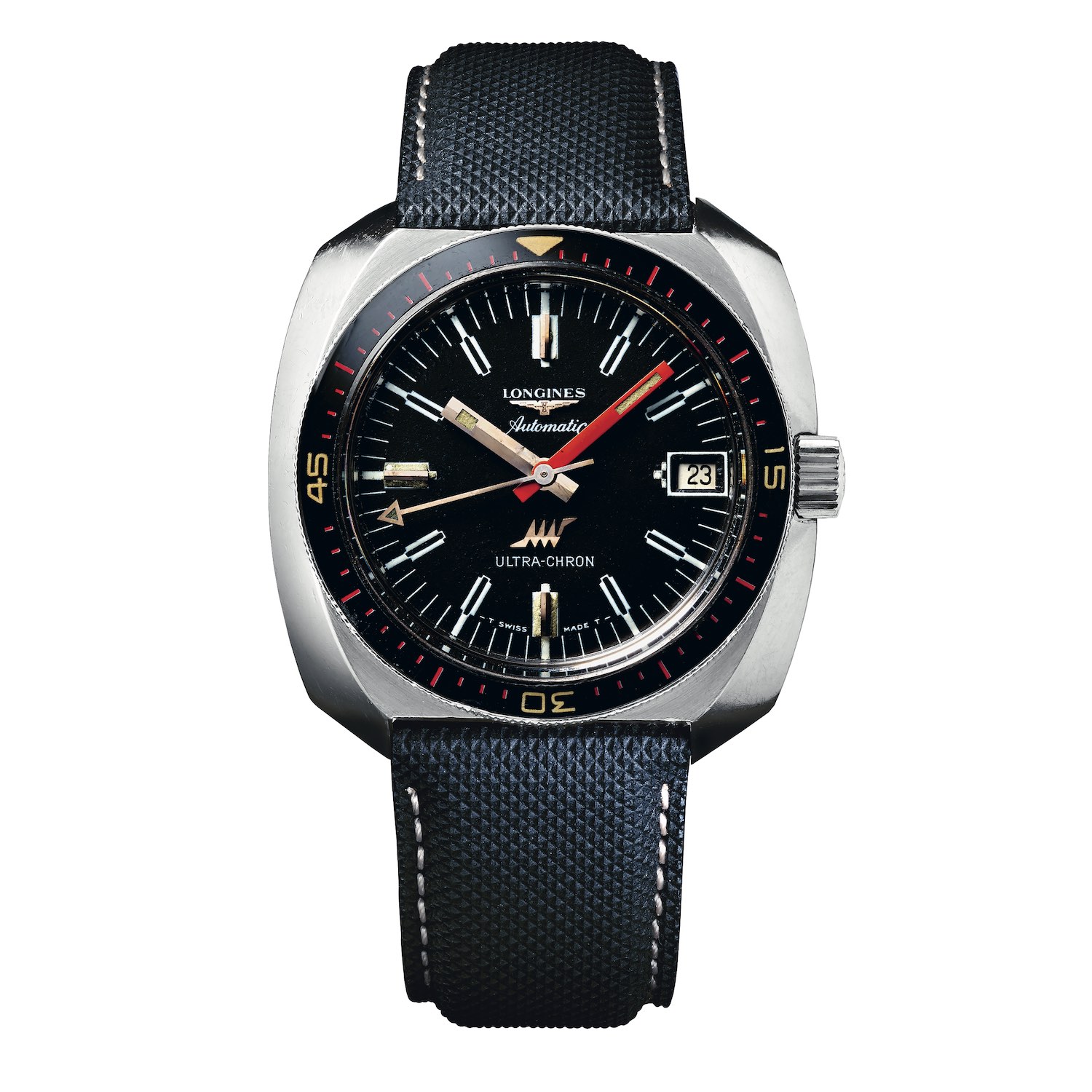
Just under two years later, Longines created a sports version of this watch, the Ultra-Chron Diver reference 7970, equipped with the same Calibre 431. This watch had a unique cushion-shaped case, a modernly-designed dial to match the innovative movement, a bright-red minute hand, and was water-resistant to 200 metres. As such, it is said to be the first high-frequency diving watch commercialized. As with all Ultra-Chron models, Longines guaranteed an accuracy of one minute a month, which converts to two seconds a day. This is this Ultra-Chron Diver reference 7970 that has been used as an inspiration to bring back the name Ultra-Chron on the market in 2022.
The new Longines Ultra-Chron Diver
So, here we are in 2022 and Longines has two things to reveal with this watch. First of all, the new Longines Ultra-Chron Diver brings back the handsome design of the original 1968 watch, in a typical “heritage” collection manner; faithful looks, modernized proportions, contemporary manufacturing and materials and, as you can imagine, a modern movement. Most of the time, that would mean a rather standard, off-the-shelves calibre that can be found in other models of the company. Think for instance, the automatic no-date calibre L888.4 of the Spirit Titanium, with its COSC certification, just to make sure the watch lives up (a bit) to the accuracy of the original model…
Well, that’s the second important thing with the new Ultra-Chron. It doesn’t take the easy route and brings a new movement, never seen before at Longines, with a high-frequency regulator. Indeed, this watch beats at 5Hz and, that’s the best part, is also “ultra-chronometer” certified. What does that mean? More on that later, when we’ll explore the mechanics.
Let’s first talk about design. The 2022 Longines Ultra-Chron Diver Re-Edition is a visually faithful watch, which brings back the flair of the original 1960s model. Right, but Longines might be very good at copying past designs but usually, the brand doesn’t only paste them without modifications. Just like most of the brand’s heritage models, the Ultra-Chron is a modern watch with a retro inspiration. As such, there are updates to be explained. The case retains the rather unusual cushion shape of the original watch, made of stainless steel and finished with brushed and polished surfaces. The diameter has, however, been slightly increased from 41mm on the original watch to now 43mm. The height of the case, at 13.40mm, remains rather controlled and the proportions are balanced overall with a watch that feels large, but not overly thanks to a short lug-to-lug of about 48mm.
The shape of the case in this new Longines Ultra-Chron Diver feels familiar but has also been reworked with a bit more subtlety than the original watch. Look closely and you’ll see that the shoulders of the new case are far thinner than before and the bezel is larger and more open. There’s less of a crown-guard effect also. It’s a concession to modernity and visual balance, but I personally think Longines has done a great job at keeping the spirit alive, yet making the watch easier to live with. Being a diver, this watch is topped with a unidirectional bezel. Still using a fully graduated and luminous 60-minute track (for the triangle and 15-minute markers), the bakelite insert has been replaced by a sapphire insert. Quite faithful visually, but far more resistant.
For the sake of vintage appeal, the Ultra-Chron Diver Re-Edition features a box-shaped sapphire crystal and doesn’t come with a sapphire caseback. The solid steel element screws down and features engravings dedicated to the collection. Combined with the screw-down crown, this watch has a comfortable 300m water-resistance.
The dial of this re-edition also pays tribute to the original, with its attractive grained texture and black colour. Most of the distinctive design elements of the reference 7920 are still present, such as the original hour markers and rectangular hands. Note that only the quarter markers are luminous. A rather surprising move, the watch gets rid of the date window found on the 1960s model… Usually, it’s the other way around with vintage reissued watches. Not complaining, this does make for a sleek watch. As with the old Ultra-Chron, the dial comes with a bold and large red lacquered minute hand and brings back the applied Ultra-Chron logo at 6 o’clock.
Let’s talk about the movement. The main point of interest with the original Ultra-Chron collection was its use of high-frequency movements. And it certainly is pleasant to see that Longines retains this important feature in the re-edition. At the heart of this Ultra-Chron Diver Re-Edition is the calibre L836.6. Using a classic ETA base that has been heavily modified to have an increased frequency, it now beats at 5Hz (or 36,000 vibrations/hour). It is equipped with an anti-magnetic silicon hairspring and boasts a 52-hour power reserve, slightly down compared to other proprietary movements used by Longines, but this is due to the higher frequency.
Also important, this movement is a chronometer (that would be sad not to have something focused on accuracy, considering the whole point of this collection). But contrary to most Longines chronometers, this Ultra-Chron Diver Re-Edition isn’t certified by the COSC, but by another independent laboratory, TimeLab. It is said to be an “ultra-chronometer” (ultra-chron) with standards that go beyond that of COSC. The process for the certification tests the watch head (not only the movement) for a 15-day period during which the watch is submitted to a series of tests at five positions and three temperatures – 8°C, 23° C and 38°C – confirming that it meets the strict precision criteria (ISO 3159:2009 standard). The watch is delivered with its own “Certificat de Chronométrie” mentioning the result of the watch to the different procedures.
The Longines Ultra-Chron Diver Re-Edition will be available in different editions. All have the same watch head and dial, the difference being the strap/bracelet and the presentation box. Two standard models will be available, either on a brown leather strap with pin buckle (L2.836.4.52.2) or a stainless steel bracelet with a folding clasp (L2.836.4.52.6). Two more editions are presented, with a large wooden presentation box. In this case, in combination with the steel bracelet (L2.836.4.52.9) or the leather strap (L2.836.4.52.8), there will be an additional black NATO strap crafted from recycled material. The box also includes a tool to change straps.
Availability & price
The Longines Ultra-Chron Diver Re-Edition is released as part of the permanent collection and isn’t limited. The price starts from CHF 3,000 on a leather strap and goes up to CHF 3,500 for the version with a steel bracelet and NATO strap.
For more details, please visit www.longines.com.

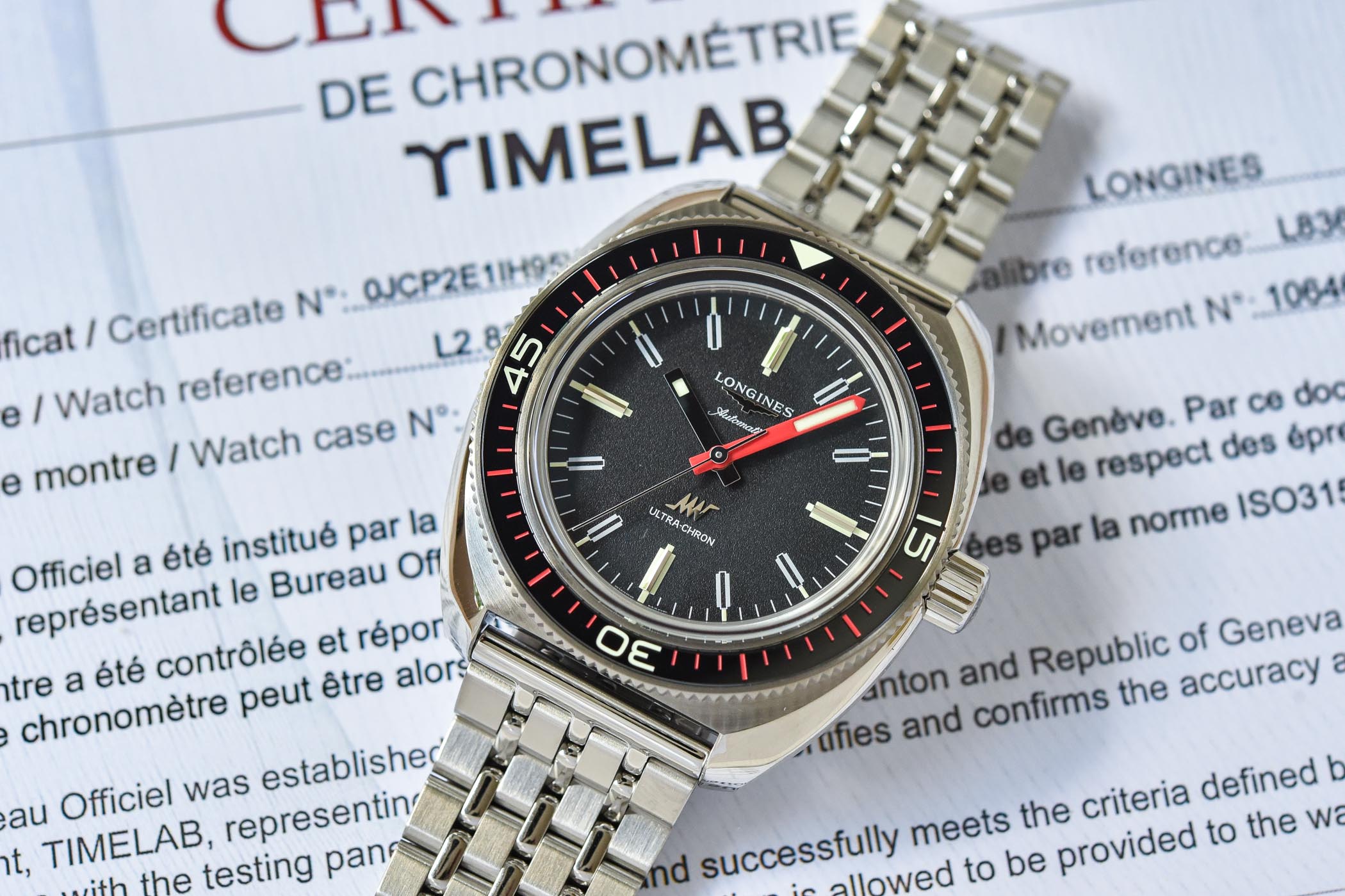

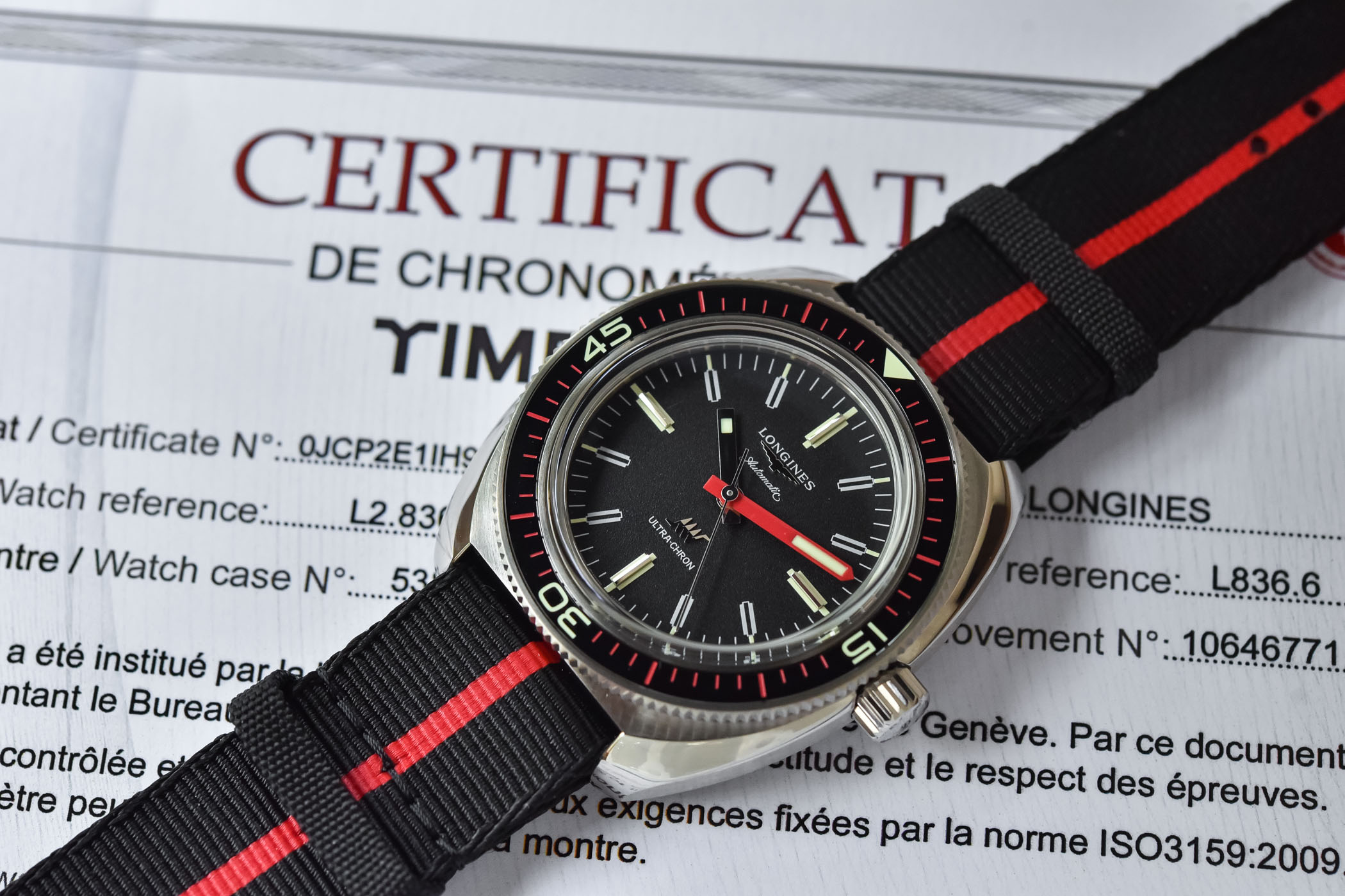
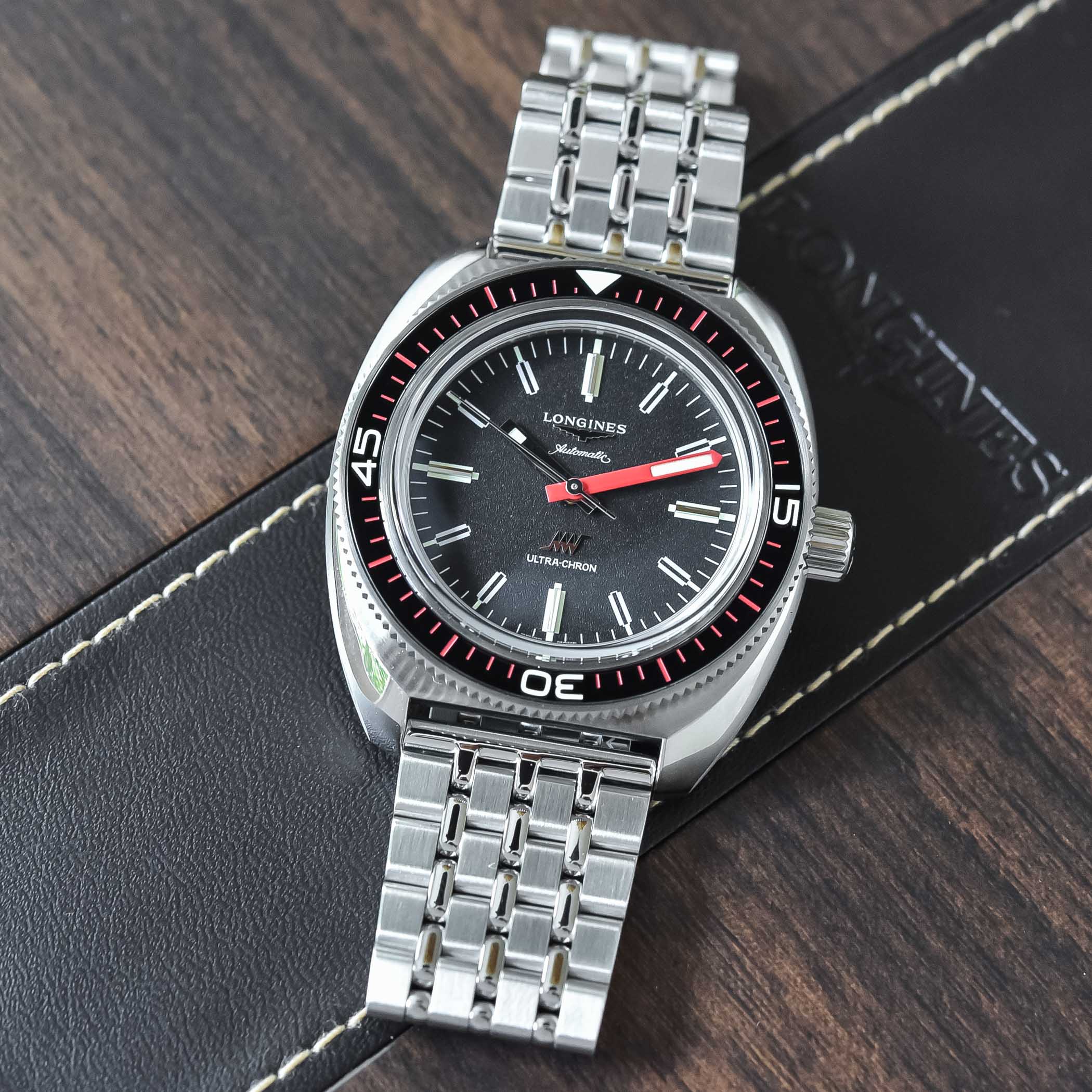

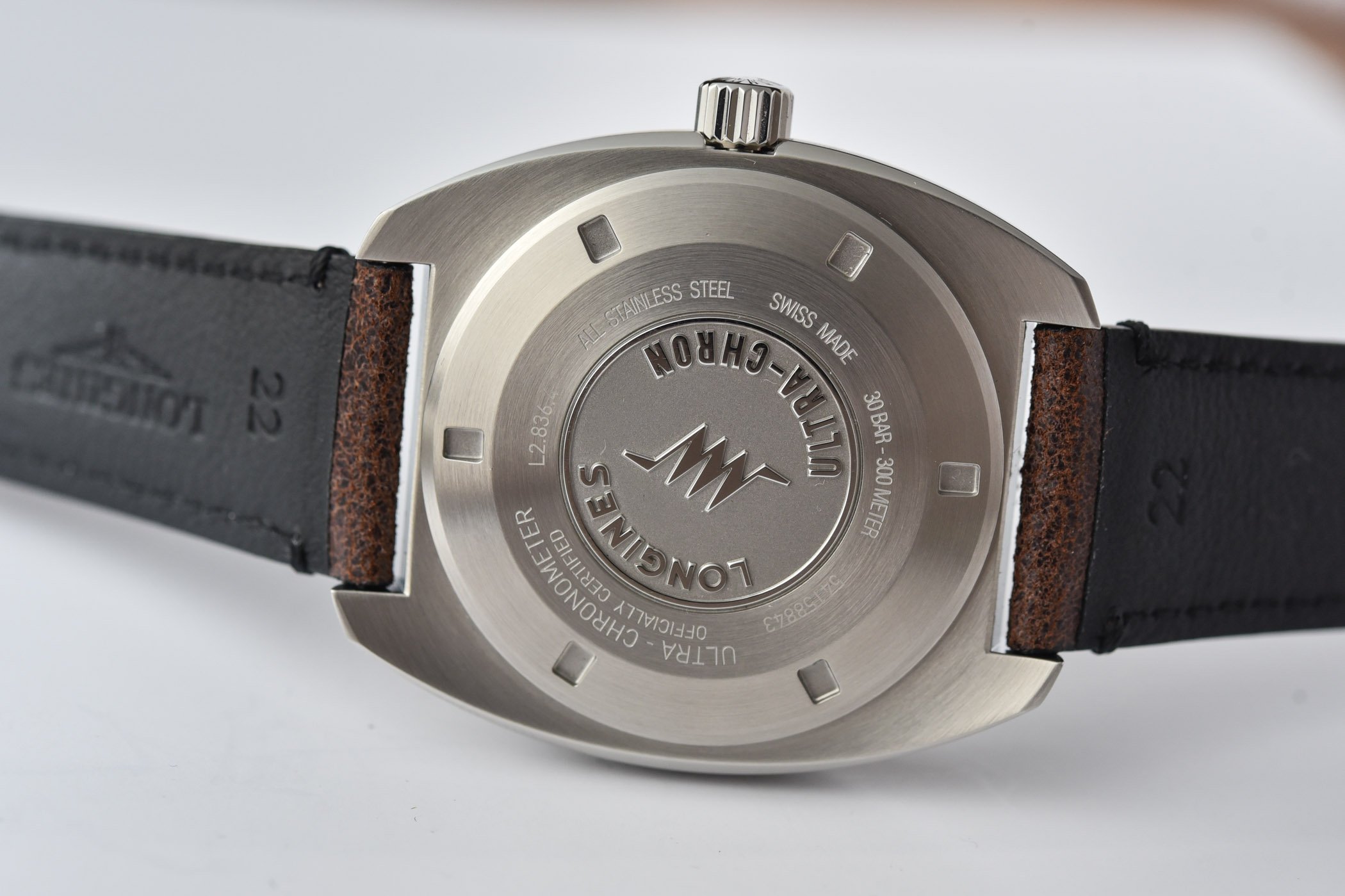

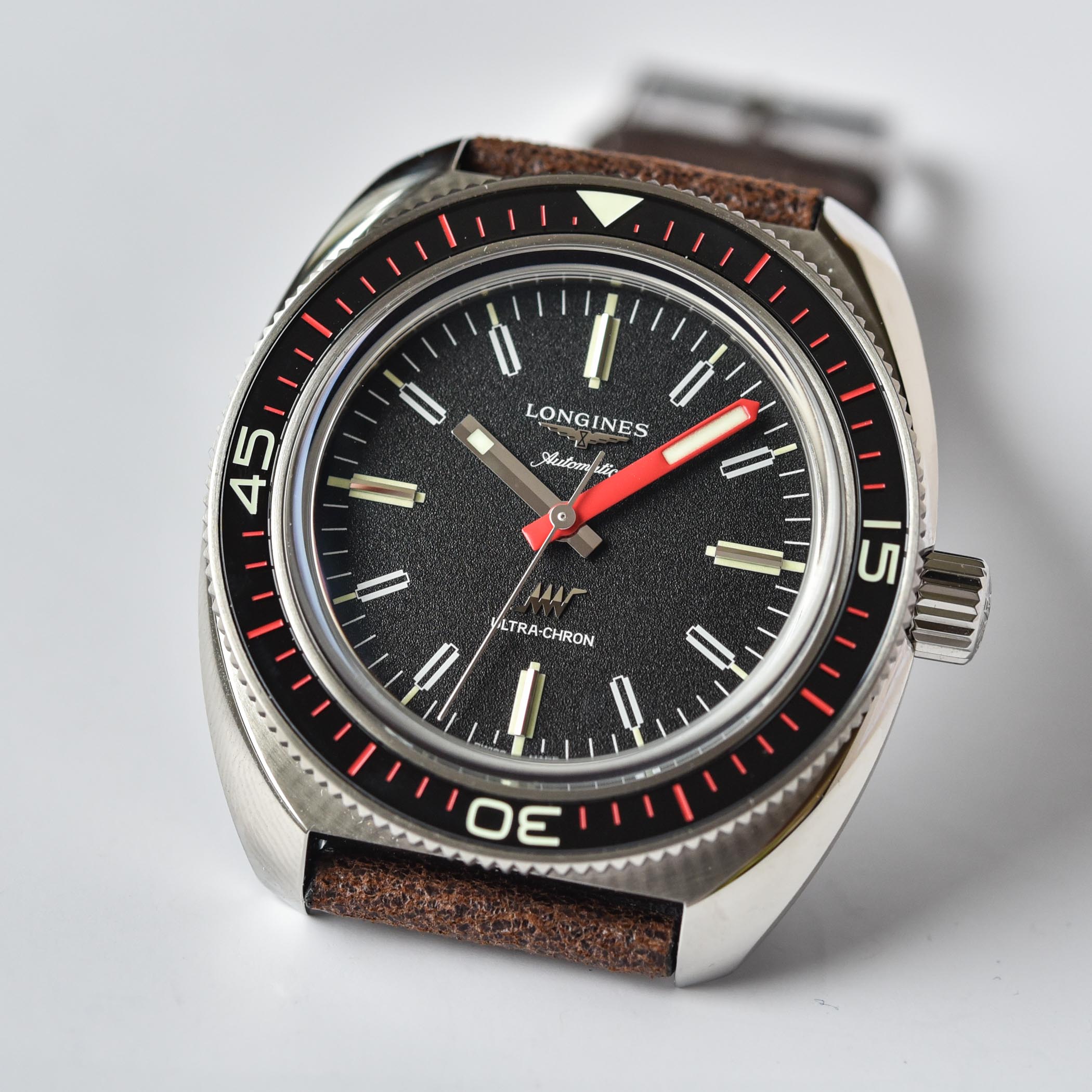

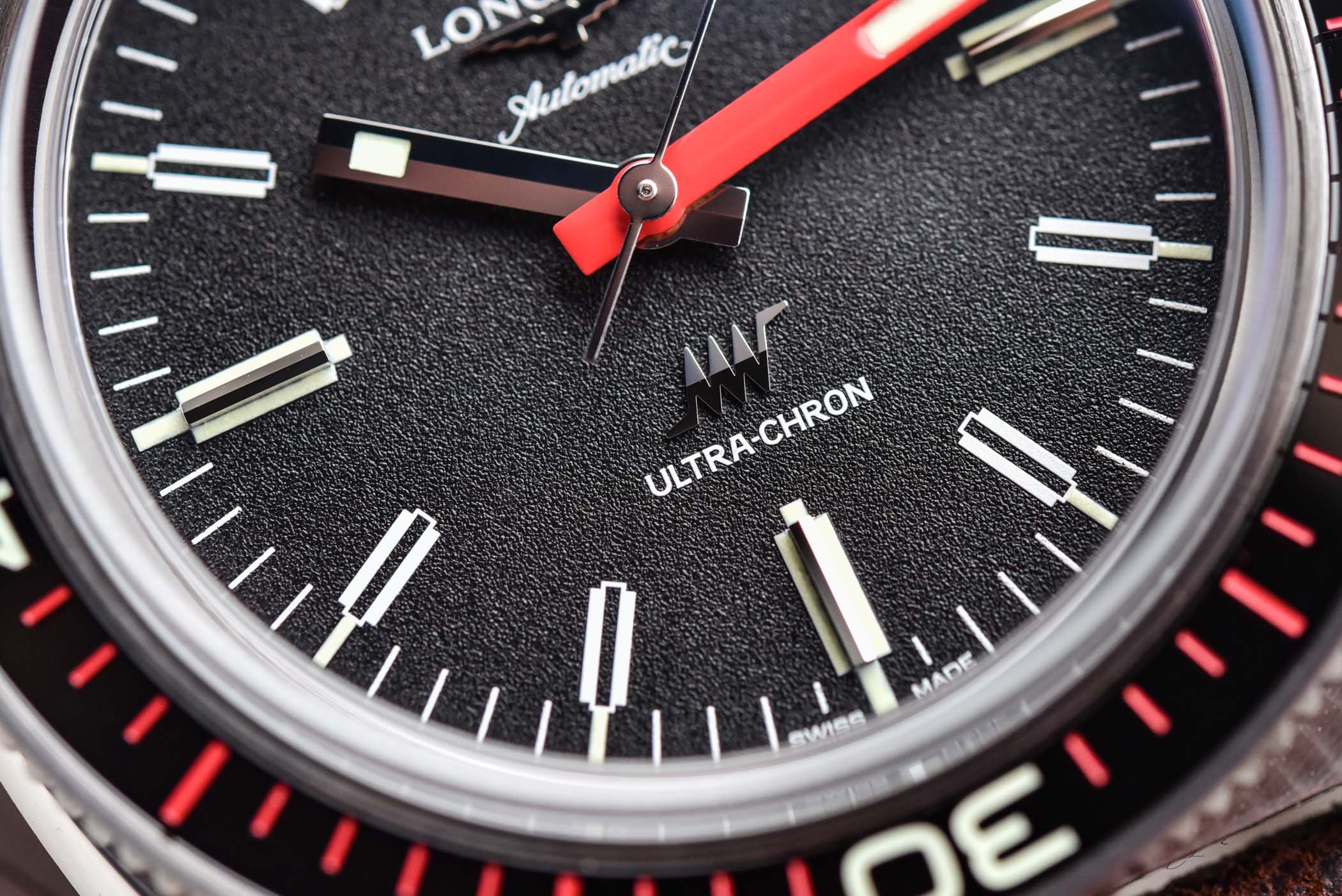
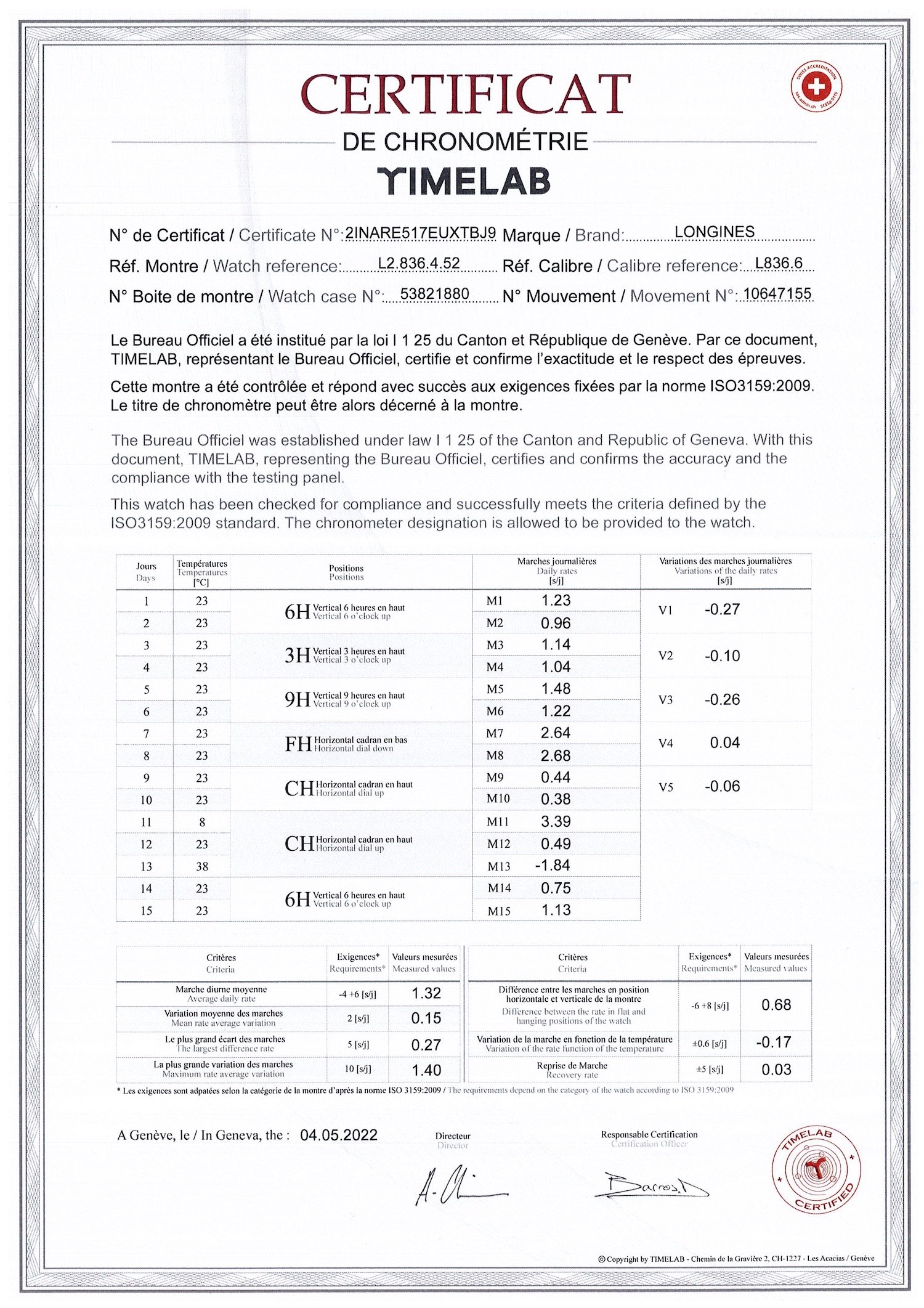
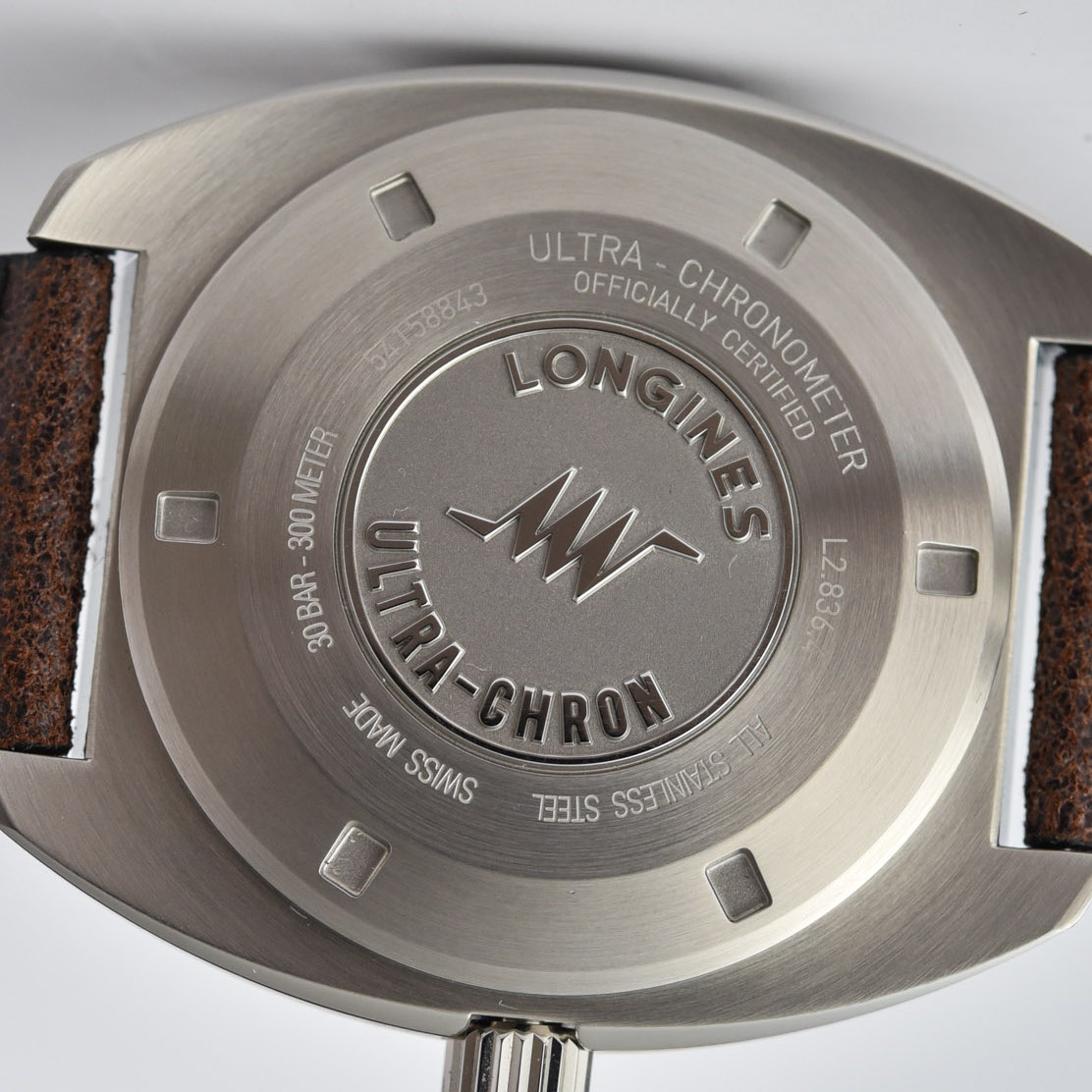
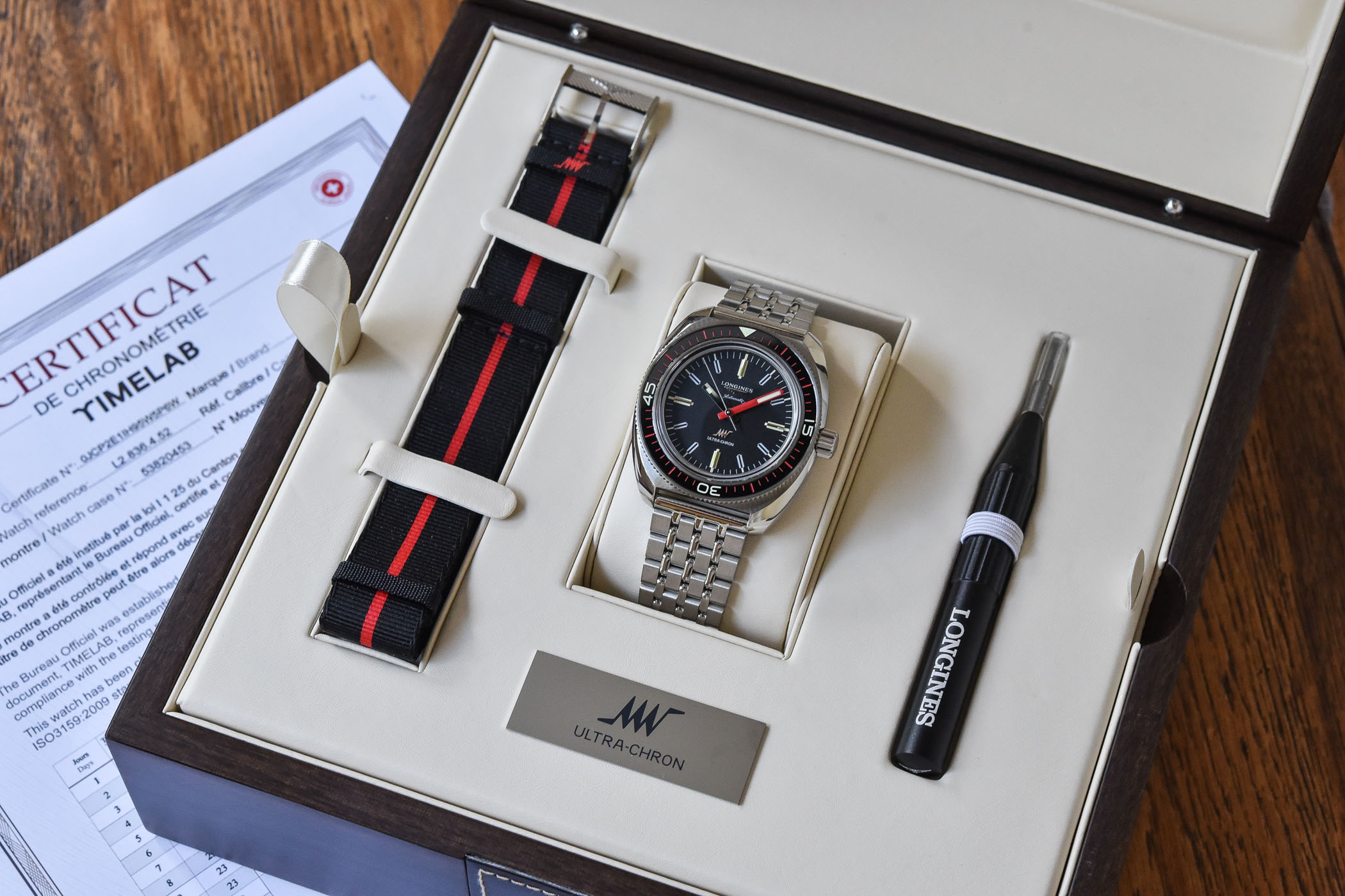
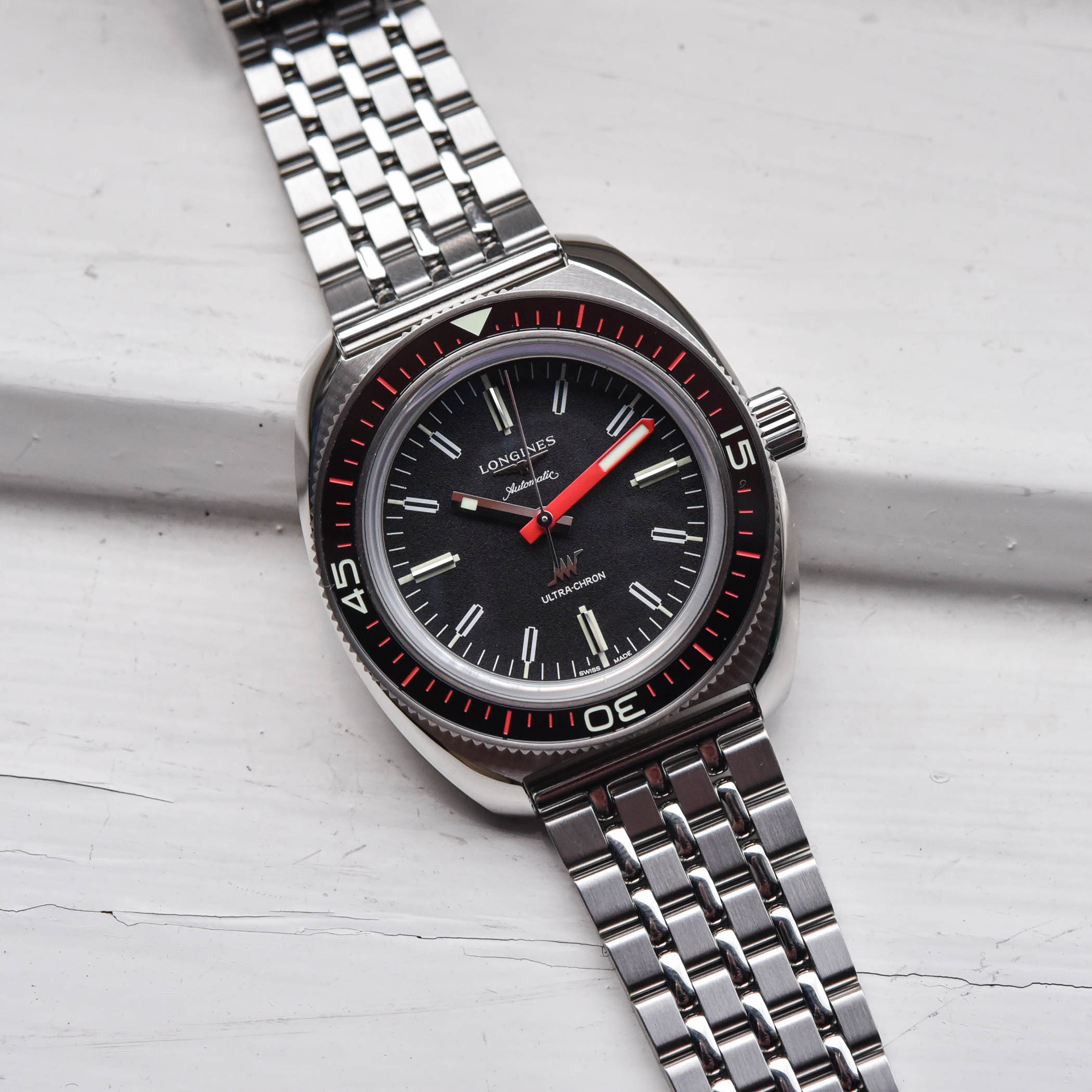
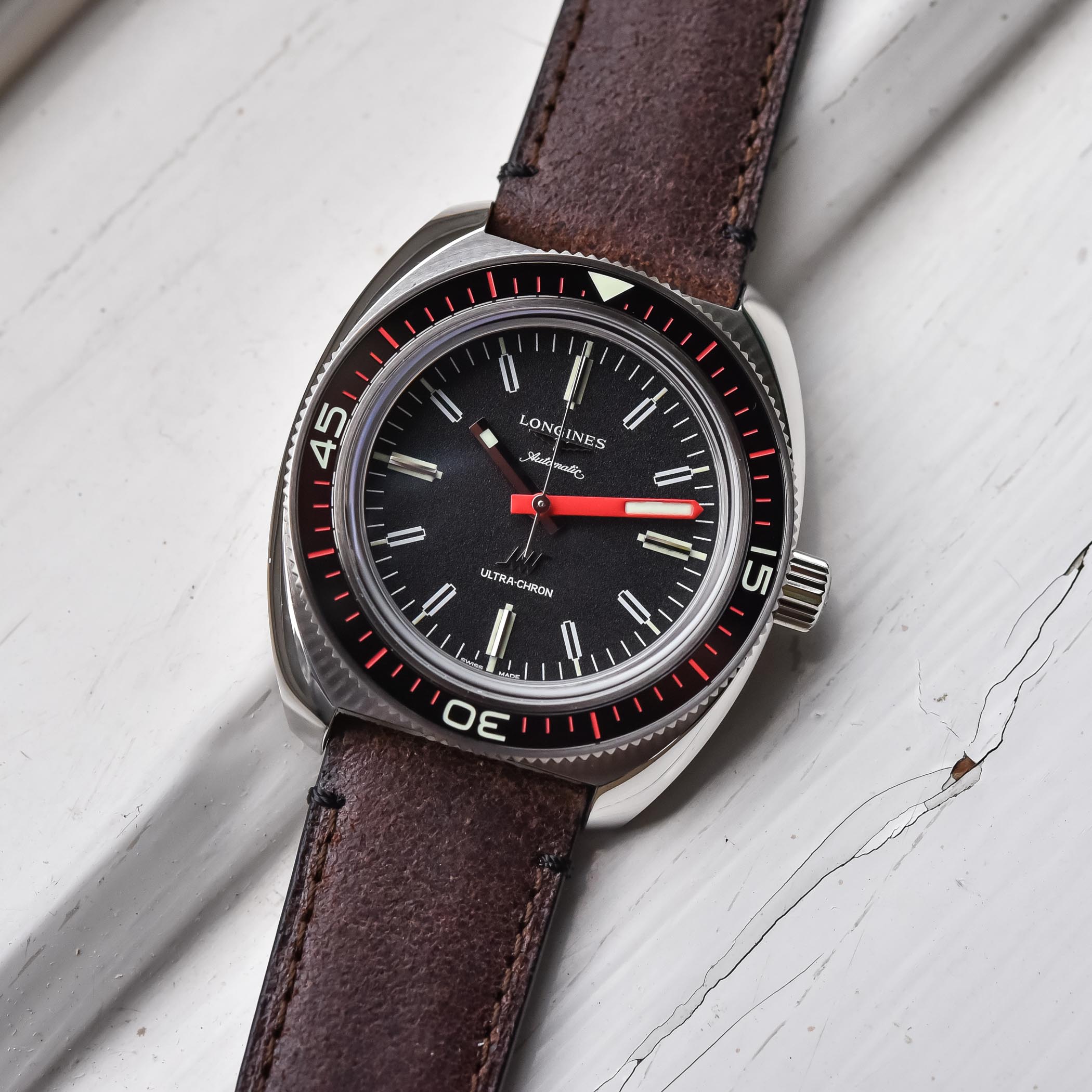



3 responses
Well done but why no lumious seconds hand like the original? A bit incomprehensible.
Doesnt the lack of luminous seconds indication me mean that is not certified for diving ?
Great Post!Thanks for sharing such great information.
Keep Sharing.